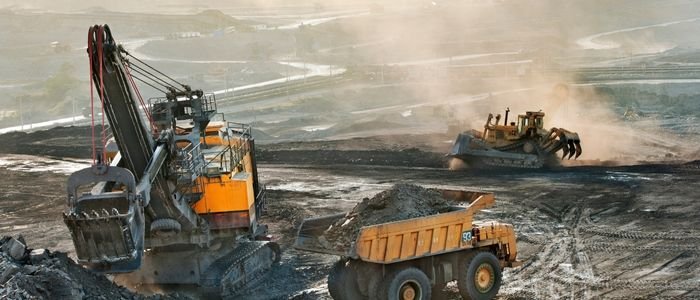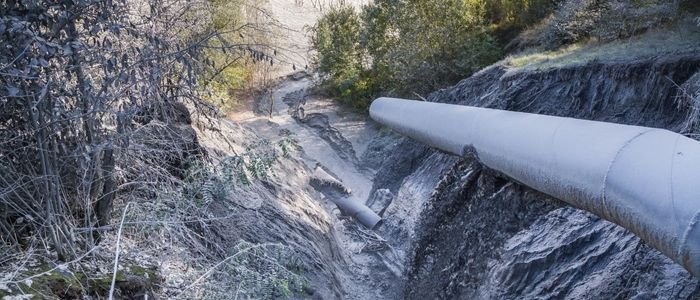When looking for the best slurry pump, will you consider the need for heavy-duty operations? Kingda offers something of value. Kingda’s slurry pumps are not simply suitable; they are the best.
Kingda is growing to become the biggest company in the world that makes and sells high-performance pumps for the mining and mineral industries.
Kingda produces the best slurry pumps for dredging, tunneling, and water treatment.
Stay in touch, because this post is for you. It will have a lot of valuable details about slurry pumps.
What is a Slurry Pump?
This kind of water pump is made for when things are accidentally or intentionally floating in the water. Like centrifugal pumps, slurry pumps use an impeller to turn the water.
Depending on the application, rotation controls the size of the particles and keeps solids from getting into other parts of the equipment and damaging or corrupting them.
In other situations, a slurry pump is used to keep solids in a liquid medium from settling or getting even more separated from the liquid.
Also, some chemicals and other materials can’t be moved safely unless they are suspended in water.
principles remain unchanged. Even though there are many different kinds of slurry pumps on the market, the basic way they work hasn’t changed. The pump is usually encased in a high-pressure casing with a semi-spiral design.
So, several driving mechanisms inside the case turn a shaft and bearing unit. Along the shaft are impellers with vanes that help provide the centrifugal force needed to spin the slurry.
As the impeller swirls or centrifuges the slurry, bearings keep the post moving smoothly and consistently once the drive devices are engaged.
What are the Kinds of Slurry Pump that are for Mining
In the mining industry, numerous types of pumps are utilized.
The centrifugal slurry pump is a common type of pump that can move liquids with solids in them. A slurry is a mixture of solids (often with a specific gravity of more than 1), usually water.
Gravel Pump
Sand pumps are most frequently utilized in pumping systems transporting sand deposits over vast distances.
It is categorized as sand pumps, slurry pumps, and gravel pumps. In the mining, metallurgy, coal washing, power plants, sewage water treatment, dredging, chemical, and petroleum industries, they are used a lot.

Dragline Pump
Dredge pumps are a subset of heavy-duty slurry pumps employed in the dredging process. Dredging is moving submerged sediments (often sand, gravel, or rocks) from one location to another.
Dredging occurs in shallow water regions of lakes, rivers, and the ocean for land reclamation, desilting, flood mitigation, establishing new ports, and extending existing ports. The construction sector, the mining business, the coal industry, and the oil and gas industry all require dredge
Underwater Slurry Pump
A submersible pump is a machine with a motor that is tightly connected and sealed. The entire assembly is submerged in the pumping fluid. The main benefit of this type of pump is that it stops pump cavitation, which happens when there is a big difference in height between the pump and the surface of the fluid.
Pump Sludge Vertically
Vertical centrifugal pumps are another name for a type of cantilever pump. Since the bearings are outside the pit, the paths of these pumps let the volume fall into the hole. A throttle bushing covers the shaft of this type of pump instead of a filling container. Most of the time, this type of pump is used to wash parts.
Horizontal Pump
These pumps have at least two, if not more than two, impellers. This pump is used for pumping services. Every step is primarily a divide pump.
Each phase is housed in a similar enclosure and mounted on a comparable shaft.
On a single horizontal beam, at least eight stages can be placed. Each step improves the skull by roughly the same amount. Multistage pumps may have a single or double suction on the initial impeller. This type of centrifugal pump has been provided by, as well as serviced by, a variety of pumps.
Pump for Sludge Slurry
Frequently, mineral processing relies on forming foam to separate valuable minerals from waste. Air and chemicals are introduced to the process.
Rich minerals trap air and rise to the top of a flotation cell as bubbles, while sand and clays with no commercial value sink to the bottom and become tailings. All of this can happen in a series of tanks called routers, scavengers, and cleaners.

Water Pump
Water pumps are essential equipment. They drive coolant through the engine block, hoses, and radiator to eliminate engine heat. In most circumstances, the pump is driven by the crankshaft pulley, but in certain instances, it is gear-driven off the crankshaft.
The trapped coolant between the impeller blades is expelled by centrifugal force. In the center of the pump housing, a vacuum (suction) is created.
Centrifugal Pump
Centrifugal pumps are dynamic, work-absorbing turbomachinery with an axisymmetric shape. Fluids can be moved with these pumps by turning the spinning motion into power for the flow of the liquid.
The fluid enters the pump impeller along or near the spinning axis. The impeller sped up it, moving radially outward into a diffuser or volute chamber (casing) before leaving the pump.The fluid flows into the pump’s impeller along or near the axis of rotation. The impeller speeds up the liquid, which moves radially outward into a diffuser or volute chamber (casing) before leaving the pump.
What are the Parts of a Slurry Pump for Mining
Slurry Pump Wet Parts directly contact slurries and prolong pump life. Sucn as;
- impeller,
- volute liner,
- throat bush,
- frame plate liner insert
- cover plate liner,
- frame plate liner,
- casing, and others are
- wetted.
These components are susceptible to deterioration due to on-site abrasive and corrosive slurries. Material plays a significant role in ensuring the long service life of pump parts.
In slurry pumping applications, there needs to be a more accurate way to choose the type of material to use. The process must first consider all the variables (factors) of the specific slurry.
The procedure must consider the limitations imposed by the following:
- slurry pump type
- slurry pump speed
- alternatives within the range of available models.
Consider the solids’ size, shape, and hardness while choosing a pumping material.
How to Choose a Slurry Pump for Mining
When choosing a slurry pump for mining operations. Consider the following;
- Occupational conditions.The most important parts of the job are the flow rate, head, specific gravity of the slurry, and PH level of the particles. Initially, determine the pump type, material, etc., by examining the operating conditions.
- Requirements for supplementary equipment. Consider equipment operational parameters. Foam coefficient and removal must be considered during flotation.
In addition, during the screening process, the cyclone must be pressurized.
Special consideration
- The concentration of pulp: The concentration influences the abrasiveness of the slurry. The slurry is rougher and has a higher specific gravity, so it is more concentrated. Therefore, slurry pumps are classified as heavy, neutral, and light.
- Slurry pump manufacturer: Finally, and most importantly, be sure to locate a reliable manufacturer! Customers who purchase mining slurry pumps frequently inquire about the durability of our equipment.
Which Slurry Pump is Best for Mining
Slurry pumps are essential to mining operations because they move slurry around the plant. Their running costs are a big part of the total ownership cost, estimated at 32%. So, if your slurry pump breaks down, your project will come to a screeching halt.

- Horizontal slurry pump. The horizontal slurry pump is always ground-mounted. It is the most prevalent form of slurry pump used in various applications. Suitable for use with an electric motor or a diesel engine.
- Vertical slurry pump. The pump body of a vertical slurry pump is constantly submerged in water; however, the engine is located above the pump body in semi-dry environments such as a sump or pool.
- Slurry submersible pump. All of the parts of a submersible slurry pump system work directly in the slurries without any extra support. Simple to install.
What’s the Difference Between Side- and Upper Pumps?
- The barrel-shaped structure of the vertical suction pump below the ground gives it a more positive NPSH than a horizontal pump.
- Most horizontal pumps have a 90-degree angle between where the pump takes in water and where it sends it out, but vertical pumps have a 180-degree angle.
- The impellers in vertical pumps have more than one stage, and one impeller works as the suction for the other. This means vertical pumps have higher pressure and head than horizontal pumps, which only have one stage or two casings.
- Most vertical pumps don’t cavitate because the barrel under the pump is always full of liquid. However, a small change in pressure or NPSh can cause a horizontal pump to cavitate.
- The motor of a vertical suction pump is above the pump. If something breaks in the pump, the maintenance team has to first drop the motor before they can start working on the pump.
- If something breaks in a horizontal pump, the maintenance team can start working on the pump without dropping the motor.
The Kingda pump group, Xingtang Pump Co., Ltd., can manufacture 10,000 sets of industrial impurity pumps, such as slurry pumps, dredges pumps, desulfurization pumps, shield pumps, and 2800 t of pump accessories.
You need solid pumps that can handle different solids. Check out our other mining slurry pumps and choose the one that meets your needs. Please visit our website for more information.


